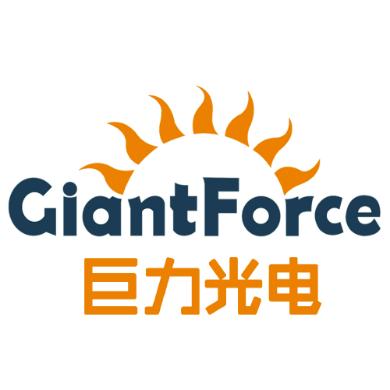
主要内容:
具有n-i-p结构的钙钛矿太阳能电池(PSC)虽然展现出了高效率,但其工作寿命却受到钙钛矿层与掺杂空穴传输层(HTL)之间层间离子扩散问题的严重制约。这一问题不仅削弱了HTL的导电性能,还加速了钙钛矿组分的分解。为解决这一难题,华侨大学的魏展画教授、谢立强教授与香港城市大学的Alex JEN(任广禹)教授带领其团队创新性地引入了超薄(约7纳米)的p型聚合物中间层D18,凭借其卓越的离子阻挡能力,巧妙地将其置于钙钛矿层与HTL之间。
实验结果表明,D18中间层不仅有效抑制了锂、甲铵、甲脒及碘离子的层间扩散,还优化了钙钛矿/HTL界面的能级排列,从而促进了高效的空穴提取。在0.12平方厘米和1.00平方厘米的有效面积下,所制备的PSC分别实现了26.39%(经第三方认证为26.17%)和25.02%的效率。尤为值得注意的是,这些器件在最大功率点跟踪条件下连续运行1100小时后,仍能维持初始效率的95.4%,这标志着n-i-p结构PSC在稳定性方面取得了突破性进展。
进一步的分析揭示,D18作为空穴选择性中间层,在热应力条件下能够有效阻止离子从钙钛矿层(PVSK)向HTL的扩散,从而避免了离子腐蚀导致的HTL性能下降。此外,通过实现PVSK/D18与Spiro之间更优化的界面能带排列,最大限度地减少了界面复合损失,进而提升了开路电压(VOC),降低了传输过程中的能量损失,并提高了填充因子(FF)。
综上所述,魏展画教授、谢立强教授与Alex JEN教授带领团队成功验证了聚合物D18中间层在PSC中的卓越性能。该中间层不仅能够有效抑制层间离子扩散,还能保持高效的空穴传输,从而显著提升了n-i-p结构PSC的稳定性。在T95条件下,这些器件展现出了卓越的工作寿命(超过1100小时),进一步证明了聚合物电荷选择性中间层在提高钙钛矿太阳能电池及组件工作寿命方面的巨大潜力,为其商业化应用奠定了坚实基础。
Fig. 1: Ion-blocking effect of the D18 membrane.

aDevice architecture, the structure of D18 polymer, and the detailed ion blocking effect of D18 membrane.bSchematic for investigating the effectiveness of D18 on blocking ion diffusion.cXRD patterns of PbBr2, FAI, and films after spin-casting FAI on PbBr2or D18-covered PbBr2.dHRTEM image of the enlarged PVSK/D18 interface for FTO/SnO2/PVSK/D18 structure, Spiro was first deposited on the top of FTO/SnO2/PVSK/D18 and then washed off with room-temperature chlorobenzene solvent. Au and Pt are protection layers deposited on the as-prepared film before FIB-cutting.
Fig. 2: Stabilization effect of the D18 membrane on perovskite and perovskite/HTL heterostructures.

aIllustration of the XRD and reflection spectroscopy tests for the complete solar cell devices during accelerated thermal aging at 85 °C. XRD patterns (b) and reflection spectra (c) of the control and D18 devices before and after aging.dCross-sectional SEM images of aged control and D18 devices. ToF-SIMS depth profile of I−and FA within the aged control (e) and D18 (f) devices.gIllustration of exposing the aged Spiro surface for KPFM measurement. KPFM images of Spiro of control (h) and D18 (i) devices before and after aging, respectively.+
Fig. 3: Effect of the D18 membrane on improving the charge carrier dynamics and reducing the VOC loss and FF loss of PSCs.

PL spectra (a) and TRPL decay (b) of PVSK, PVSK/D18, PVSK/Spiro, and PVSK/D18/Spiro stacks. c Energy level diagram of PVSK, PVSK/D18, and Spiro. d Measured VOC and QFLS of the control and D18 devices. e One sun J-V (lines) and pseudo J-V (symbols) curves of the control and D18 devices. f FF loss analysis of the control and D18 devices. The data points connected by the black dashed line are ideal FF from the Shockley-Queisser (SQ) limit. The data points connected by the red dashed line are the maximum FF without charge transport loss. The data points connected by the red solid line are the measured FF from the devices.
Fig. 4: Effect of the D18 membrane on PCE and stability of PSCs.

aReverse and forwardJ-Vscan of the control and D18 devices (0.12 cm2). –R indicates reverse scan and –F indicates forward scan.bStatistical PCE of the control and D18 devices.cReverse and forwardJ-Vscan of large-area (1 cm2) control and D18 devices.dOperational stability of the control and D18 devices.eThermal stability of the control and D18 devices under 85 °C.fDark shelf stability of the control and D18 devices. All stability tests were based on devices without encapsulation.
文献信息:
Ultrathin polymer membrane for improved hole extraction and ion blocking in perovskite solar cells
Lina Shen, Peiquan Song, Kui Jiang, Lingfang Zheng, Jianhang Qiu, Fangyao Li, Yu Huang, Jinxin Yang, Chengbo Tian, Alex. K.-Y. Jen, Liqiang Xie & Zhanhua Wei
https://www.nature.com/articles/s41467-024-55329-0#Fig1




























热门跟贴